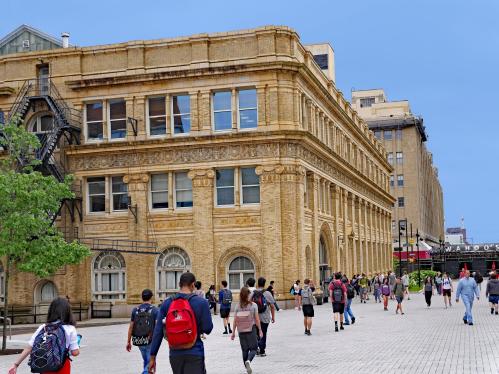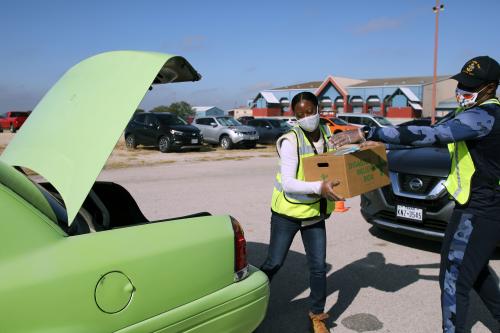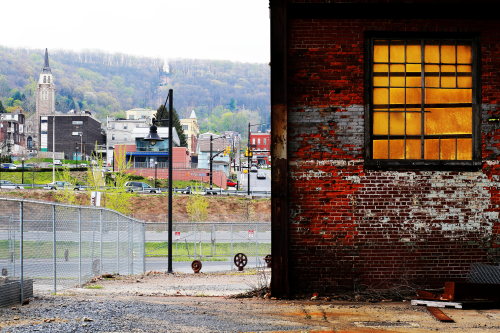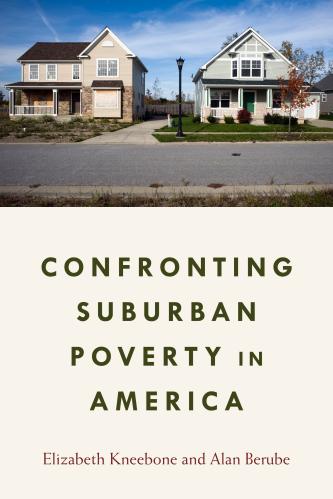The post’s title has been updated to reflect that poverty in America is concentrating in diverse locales.
Here is a rarely publicized fact about our booming economy: Despite stock market highs and low unemployment, poverty in the U.S. is pervasive. The number of people earning less than $25,750 for a family of four is rising in both Republican and Democratic districts, and across racial and geographic lines. According to an analysis of Census Bureau data by Stateline, a division of the Pew Charitable Trusts, poverty increased in 30% of all U.S. counties between 2016 and 2018. Researchers found that poverty cut across racial and geographic boundaries “from 97% white and solidly Republican-voting Carter County in Kentucky to black-majority, Democratic Bullock County in Alabama.”
There’s a silver lining behind this economic storm cloud. Solving for poverty could potentially bridge the racial, geographic, and political divides that are eroding any appearance of cohesion the country may have. Poor people from diverse backgrounds share in a common suffering that we all should be rallying to alleviate.
Economic distress between political districts deserves attention. Incomes in Republican-voting districts have declined from $55,000 to $53,000 since 2008, according to Brookings analysis. Democratic districts, however, have seen median household income rise from $54,000 in 2008 to $61,000 in 2018.
That doesn’t mean all Democrats are benefiting from the economy, however. Additional Brookings research found that 54% of Black workers and 63% of Latino or Hispanic workers (who are more likely to vote Democratic) are disproportionately working in low-wage jobs, compared to 36% of white workers and 40% of Asian American workers (the national average for all workers is 44%). Meanwhile, the Black unemployment rate in Democratic-voting cities remains twice that of their white counterparts.
For rural areas, economic prospects are bleak. After the 2008 recession, counties with fewer than 100,000 residents lost 17,500 businesses, according to the Economic Innovation Group. Although the rural poverty rate has declined from a 30-year peak of 18.4% in 2013 to 16.4% in 2017, it’s still higher than urban areas, which are at 12.9%. And productivity in these Republican-voting regions is declining, even in an economy President Trump has claimed is the “the best it has ever been.”
Many analysts join him in that assessment: They see the unemployment rate—which has been as low as 3.5%—as a reassuring sign amid fears of an impending recession. However, since the aggregate unemployment rate uses population-wide data, it does not account for differences among racial groups, geographic areas, and other specific characteristics, which paint a much different picture of the economy.
These very real economic differences have enflamed the country’s existing racial and regional divides. But could they also be a rallying cry for people in poverty across the political spectrum? Instead of focusing on our divides, maybe researchers should emphasize how low-income Americans of all races, geographies, or parties share an economic fate—and should share an economic agenda.
An agenda focused on poverty amelioration would start with workforce development initiatives that invest in people living in impoverished counties. Coal is not making a comeback, so the communities that have historically depended on the fossil fuel industry need to modernize through—among many other efforts—expanded access to science, technology, engineering, and math (STEM) skills.
“We live in a nation that makes sure they put a basketball and a football in the hands of every Black boy before the age of four,” engineer Calvin Mackie told me for a column I wrote for the Hechinger Report. Mackie runs STEM NOLA, an organization that seeks to engage community members in STEM fields.
“We have to put STEM in the hands of all of our children,” said Mackie. “From the time they are born, we have to introduce [children] to science and technology so they can see themselves as a participant in the 21st century.”
By “participant,” Mackie means employable.
This kind of cultural shift requires an unprecedented investment in people. To improve poverty rates, we need massive federal investments in training. But it doesn’t stop there. We need to give entrepreneurs in impoverished areas—who have historically been denied capital—better access to funds. Investments in community colleges can help them develop initiatives focused on training residents for jobs of the future as well as programs that help students deal with the stresses of poverty. For instance, Amarillo College, a community college located on the Texas Panhandle, has a fund dedicated to emergencies like utilities being cut off, which can force students to fall behind or drop out.
Too many people are still suffering in “the best it has ever been” economy. Things like an illness, a job loss, or the death of a family member all can drag a person—no matter their race or political preference—into poverty today. Combatting poverty is a way to unite the country through a common goal, because after all, we do share a common fate.







Commentary
Addressing poverty can heal an increasingly divided country
December 23, 2019